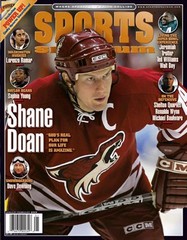An Unusual Publishing Quiz
As I m entioned yesterday, I’m reading Putting Your Passion Into Print, which is a great new book by Arielle Eckstut and David Henry Sterry. I picked up on a detail for children’s writers but this book is much broader than one genre. It’s focused on helping authors strategically examine the entire publishing process—from idea to finished book to marketing that product. This book is loaded with illustrations, quotes from publishing insiders and also some unusual facts about the book business.
entioned yesterday, I’m reading Putting Your Passion Into Print, which is a great new book by Arielle Eckstut and David Henry Sterry. I picked up on a detail for children’s writers but this book is much broader than one genre. It’s focused on helping authors strategically examine the entire publishing process—from idea to finished book to marketing that product. This book is loaded with illustrations, quotes from publishing insiders and also some unusual facts about the book business.
At the end of their introduction, these authors have an unusual publishing quiz which is a ten-question pop quiz. I’m only going to give you a taste of this quiz and a couple of the answers:
“1. Approximately how many books are published each year in the United States?
a. 5,000
b. 50,000
c. 150,000
d. 500,000
e. 1,000,000,000,000,000,000,000,000,000,000,000,000,000,000,000
2. Bestsellers represent what percentage of Barnes & Noble’s total sales?
a. Less than 5%
b. Less than 11%
c. Less than 62%
d. Less than 84%
e. Less than 99.99%
8. On average, how much profit does a publisher make on each book sold?
a. 43%
b. 31%
c. 22%
d. Less than 10%
e. No publisher has ever made a profit on anything, anytime, anywhere
9. What percentage of books earn back their advance?
a. 60%
b. 42%
c. 28%
d. Less than 10%
e. No book has ever earned back its advance, anytime, anywhere
ANSWERS: 1) c 2) a 8) d 9) d”
OK, did the answers surprise you? Because I think about these aspects of book publishing often, the answers weren’t earth shattering to me. But they should be to would-be book authors. There are many books published each year yet few of them are bestsellers. Publishers are looking for those few books which are going to earn the greatest possible profit for their company. It’s often difficult to predict which ones will take off and jump into that rare category.
Also think about the information in question 8 on the profit factor. Some people wrongly believe publishers are loaded with endless financial resources and gaining huge profits from books. That type of thinking isn’t based in financial reality. The margins of profit are slim for the publisher and that is the truth.
Finally, let’s think about the last question. Why is that figure significant? The general rule of thumb for advances is the publisher expects the book to sell to the volume where that advance earns back during the first year in the marketplace. In the contract stage, book advances are based on sales projections. The number isn’t pulled from thin air but based on potential. Now occasionally with a book, these advance numbers will get out of hand and soar but in traditional publishing, these advances are based on first year sales projections. Return to the answer for the final question on the percentage of books which earn back their advance. Any book which earns back their advance and begins to pay royalties to the author has climbed out of the red area and into the black area of the financial picture—for the author and for the publisher. It’s a significant confirmation of how the marketplace is receiving a particular book. If your book earns back your advance, it’s something to celebrate.
I hope you’ve learned something from the unusual publishing quiz in Putting Your Passion Into Print. I’m enthused about the valuable insight in this book.

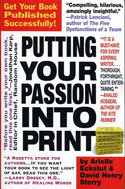

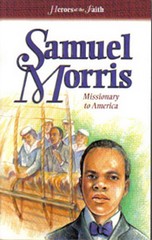
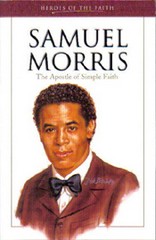 e covers, each book is exactly the same text. It’s a book that I wrote over ten years ago.
e covers, each book is exactly the same text. It’s a book that I wrote over ten years ago. 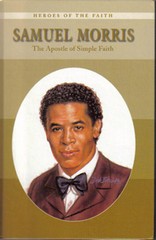 n and library market. Chelsea released a hardcover version of this book as you can see below on the left.
n and library market. Chelsea released a hardcover version of this book as you can see below on the left.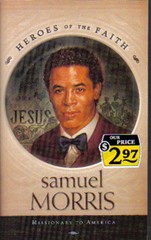
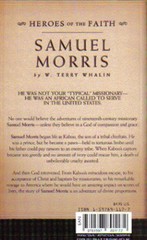 ing executives at Barbour Books. Otherwise why would it continue to be in print? It is selling. Because I wrote this book as a work made for hire, I don’t receive royalty statements (typically where an author can keep track of their sales numbers). In over ten years, I had not even tried to ask for the numbers (and I knew Barbour didn’t have to send them to me). This week, I asked the publisher and to my surprise I learned this book has sold over 74,000 copies! Now it depends on the publisher as to what they call a “bestseller” but in general anything over 5,000 or 10,000 copies is considered good in some circles. From my view, Samuel Morris has done really well.
ing executives at Barbour Books. Otherwise why would it continue to be in print? It is selling. Because I wrote this book as a work made for hire, I don’t receive royalty statements (typically where an author can keep track of their sales numbers). In over ten years, I had not even tried to ask for the numbers (and I knew Barbour didn’t have to send them to me). This week, I asked the publisher and to my surprise I learned this book has sold over 74,000 copies! Now it depends on the publisher as to what they call a “bestseller” but in general anything over 5,000 or 10,000 copies is considered good in some circles. From my view, Samuel Morris has done really well.

 Make sure you notice the addition of the little Oprah symbol on the cover of A Million Little Pieces. To a book author, the symbol is worth it’s weight in gold because is guarantees millions of sales.
Make sure you notice the addition of the little Oprah symbol on the cover of A Million Little Pieces. To a book author, the symbol is worth it’s weight in gold because is guarantees millions of sales.
 Back to my idea theme where I started this entry about the writing life. In the last few days, I was flipping through the November issue of
Back to my idea theme where I started this entry about the writing life. In the last few days, I was flipping through the November issue of 
